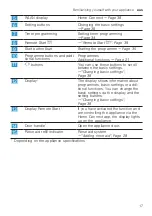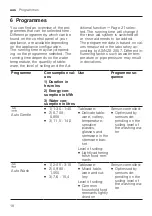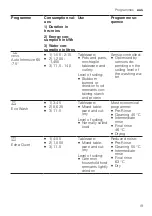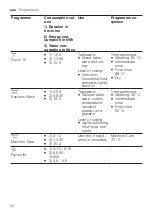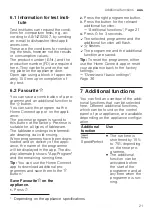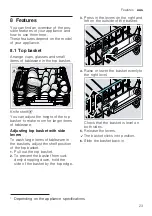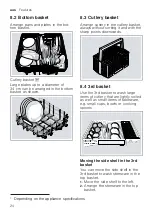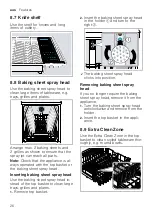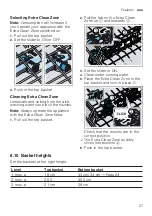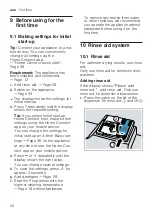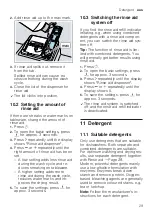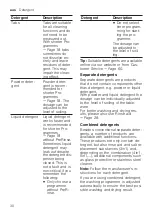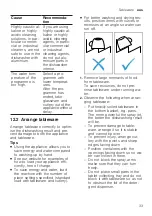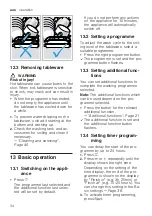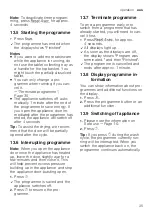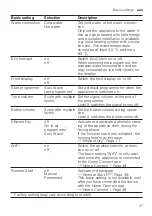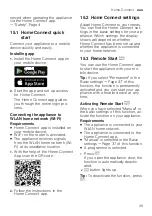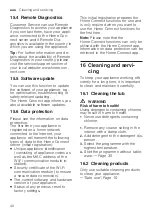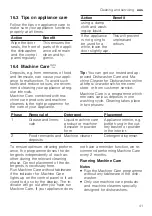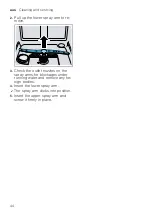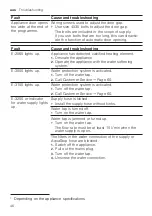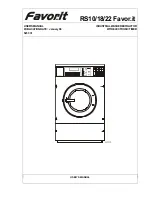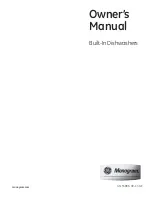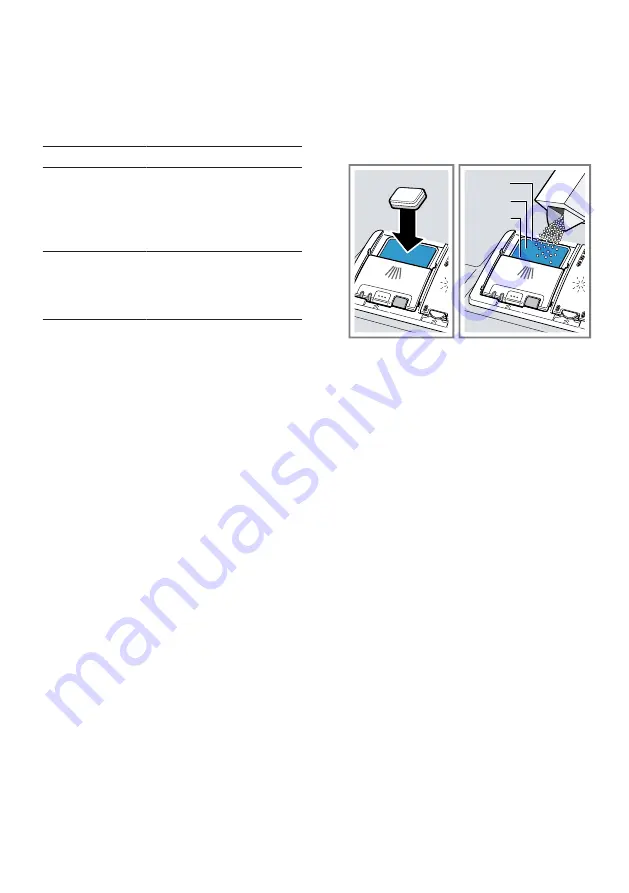
Detergent
aus
31
11.2 Unsuitable detergents
Do not use detergent which could
cause damage to the appliance or
present a risk to health.
Detergent
Description
Hand wash-
ing-up liquid
Hand washing-up li-
quid can cause in-
creased frothing and
damage the appli-
ance.
Detergent
containing
chlorine
Chlorine residue on
tableware may
present a risk to
health.
11.3 Information on deter-
gents
Follow the instructions on detergents
in everyday use.
¡
Detergents marked as "organic" or
"ecological" (environmentally
friendly) generally contain lower
levels of active agents or com-
pletely dispense with certain sub-
stances. The cleaning effect may
be restricted here.
¡
Set the rinse aid system to the
separate or combined detergent in
use.
¡
Follow the manufacturer's instruc-
tions for each detergent.
¡
To prevent sticking, only touch de-
tergents in a water-soluble pouch
with dry hands and only ever place
them in a dry detergent dispenser.
¡
Even if the rinse aid refill indicator
lights up, washing programmes will
still run properly with combined de-
tergents.
¡
The function of rinse aid is limited
with combined detergents. You will
generally get better results using
rinse aid.
¡
Use tablets with a special drying
performance.
11.4 Adding detergent
1.
To open the detergent dispenser,
press the locking latch.
2.
Add the detergent to the dry deter-
gent dispenser.
15 ml
25 ml
50 ml
If you are using tablets, one is
enough. Insert the tablets in a hori-
zontal position.
If you are using powder or liquid
detergent, follow the manufac-
turer's instructions and quantities
for dosage in the detergent dis-
penser.
20 ml – 25 ml detergent is suffi-
cient for normal soiling. If table-
ware is only lightly soiled, slightly
less than the amount of detergent
specified is usually sufficient.
Summary of Contents for SBI8EDS01A
Page 63: ......

